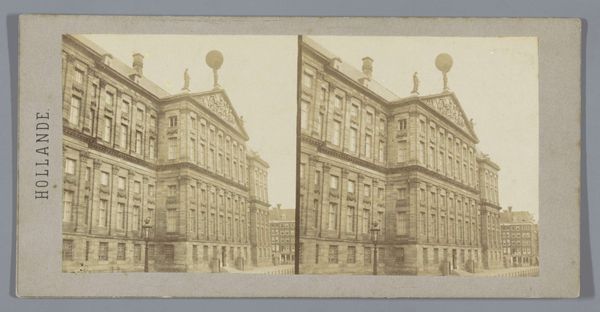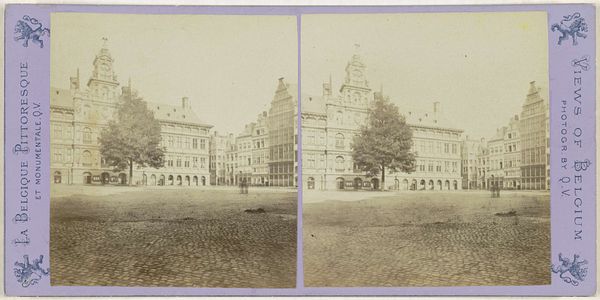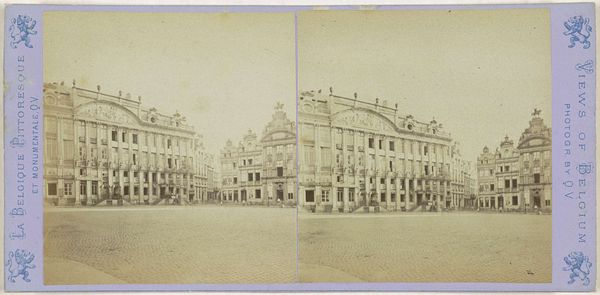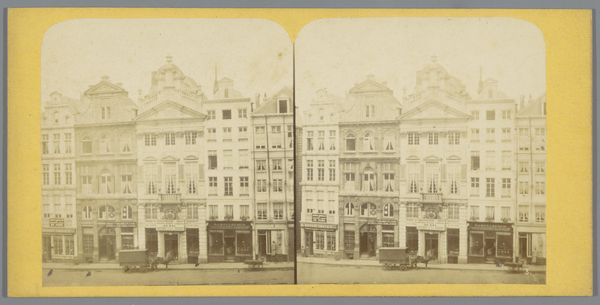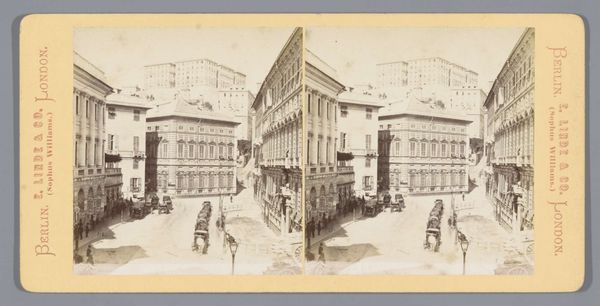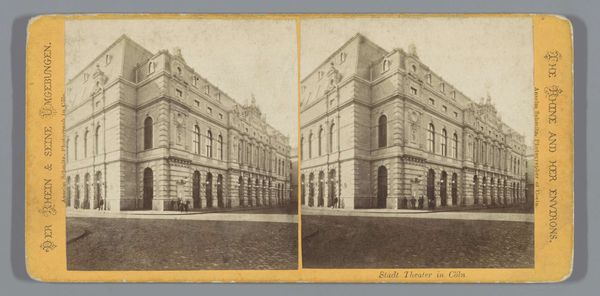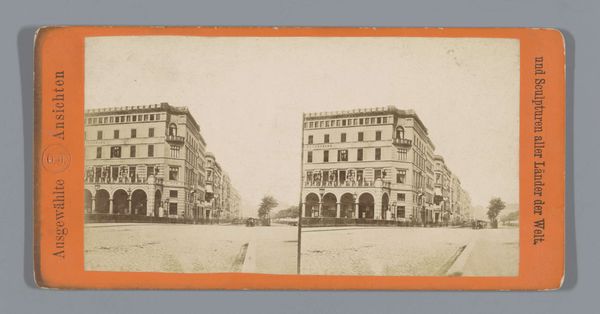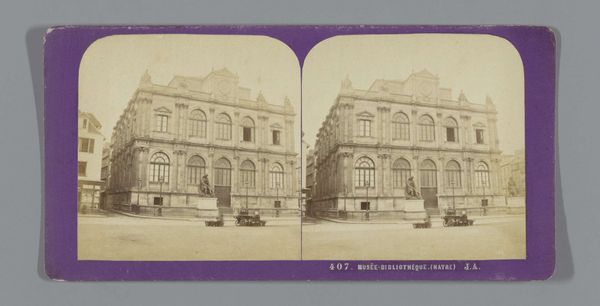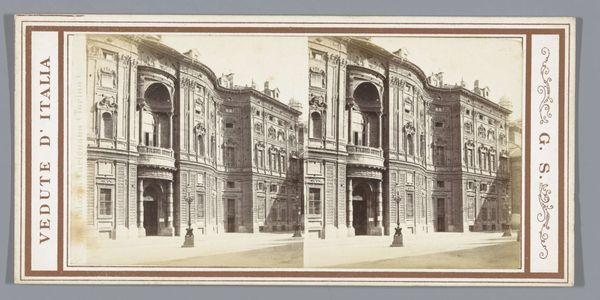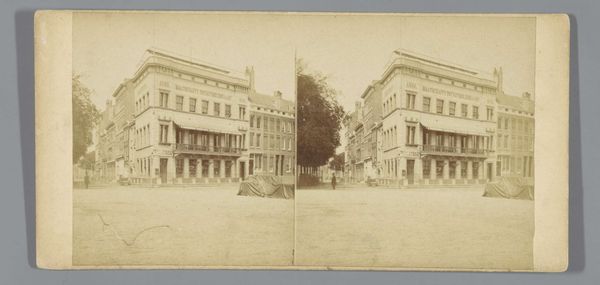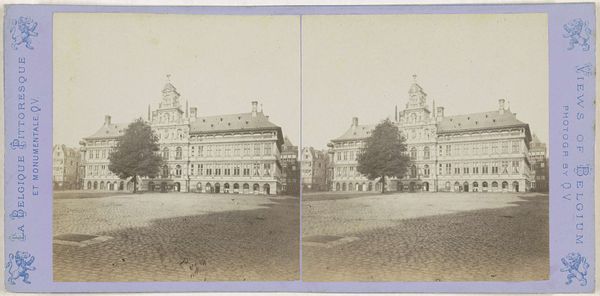
Gezicht op het Broodhuis aan de Grote Markt in Brussel 1866 - 1870
0:00
0:00
juleshippolytequeval
Rijksmuseum
photography, albumen-print
#
16_19th-century
#
neoclassicism
#
photography
#
coloured pencil
#
cityscape
#
albumen-print
#
realism
Dimensions: height 86 mm, width 176 mm
Copyright: Rijks Museum: Open Domain
Jules Hippolyte Quéval made this stereograph, “View of the Broodhuis on the Grote Markt in Brussels”, using photography. Quéval's work invites us to reflect on the relationship between place, identity, and power. In the mid-19th century, photography was a tool for documenting and celebrating urban spaces, often reinforcing dominant narratives of progress and national identity. The Broodhuis, or Maison du Roi, was a symbol of authority, having served as a center of ducal and royal power for centuries. Consider the Grote Markt, the grand square, and the Broodhuis, the King's House. This is a view of Brussels through a very specific lens: one of power and regal authority. Photography, still a relatively new medium in Quéval's time, captured not just a place, but also an idea, an assertion of Belgian identity tied to its monarchy. Notice how the square is empty, almost staged, perhaps reflecting a curated version of Belgian society. This image is more than just a photograph; it's a carefully constructed representation of power, place, and identity in 19th-century Belgium.
Comments
No comments
Be the first to comment and join the conversation on the ultimate creative platform.

